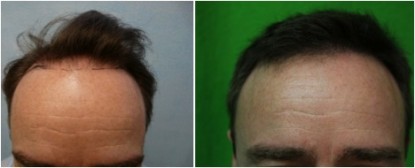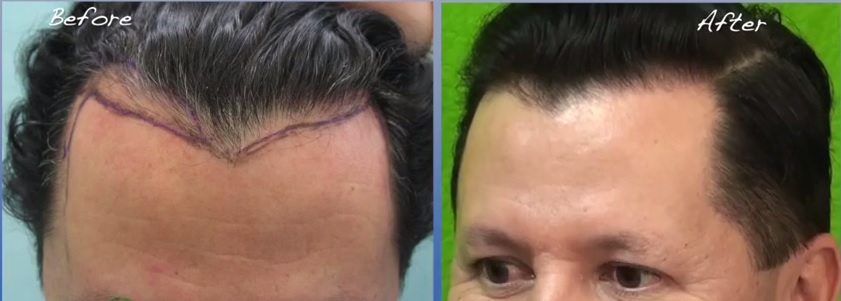UGraft Nape Hair FUE Hair Transplant by Dr U
Dr. Umar is a world-leading follicular unit extraction surgeon. His work on the use of nape and periauricular hair (The first ever) has been published in the Aesthetic Surgery Journal. In it, Dr U redefines what constitutes the safe donor area and takes soft natural hairline creation to a new level with his description of “FUE SHAVE TEST”. The question was even specifically targeted toward Dr. Umar, as his impressive FUE and use of nape hair is creating a buzz.
It’s no wonder people are inquiring about non-traditional donor sources—who would want to have a hair restoration transplanting nape hair to later find out that the long-term graft survival rate is low? Patients want hair that looks great, and that will last permanently. Dr. Umar’s reply to the online community is reassuring—through his years of practice and experience, he confirms that nape hair is not always DHT susceptible, regardless of its location outside the SDA. Patients who would go on to loose nape hair in the future would usually show signs of thinning in the nape area rather early in life to the extent that a surgeon screen out such individuals. So it mostly boils down to careful patient examination and clerkship by the doctor. In qualified candidates, not only does nape hair add to the total available donor pool, it is a natural fit for hairline refinements as well as eyebrow and eyelash reconstruction where the innate thinness of the hair makes for a more natural look. He has transplanted nape hair with lasting success to refine hairlines, and has even used other non-traditional donor sources (such as facial or chest hair, with body hair transplant) for those whose baldness is beyond the correction capabilities of strip harvesting.
Regardless of what a hair transplant surgeon recommends, it is up to the patient to decide if he trusts a non-traditional donor source like nape hair. It is true that the use of non-SDA hair hasn’t been around as long, but Dr. Umar’s results are showing long-term promise.


